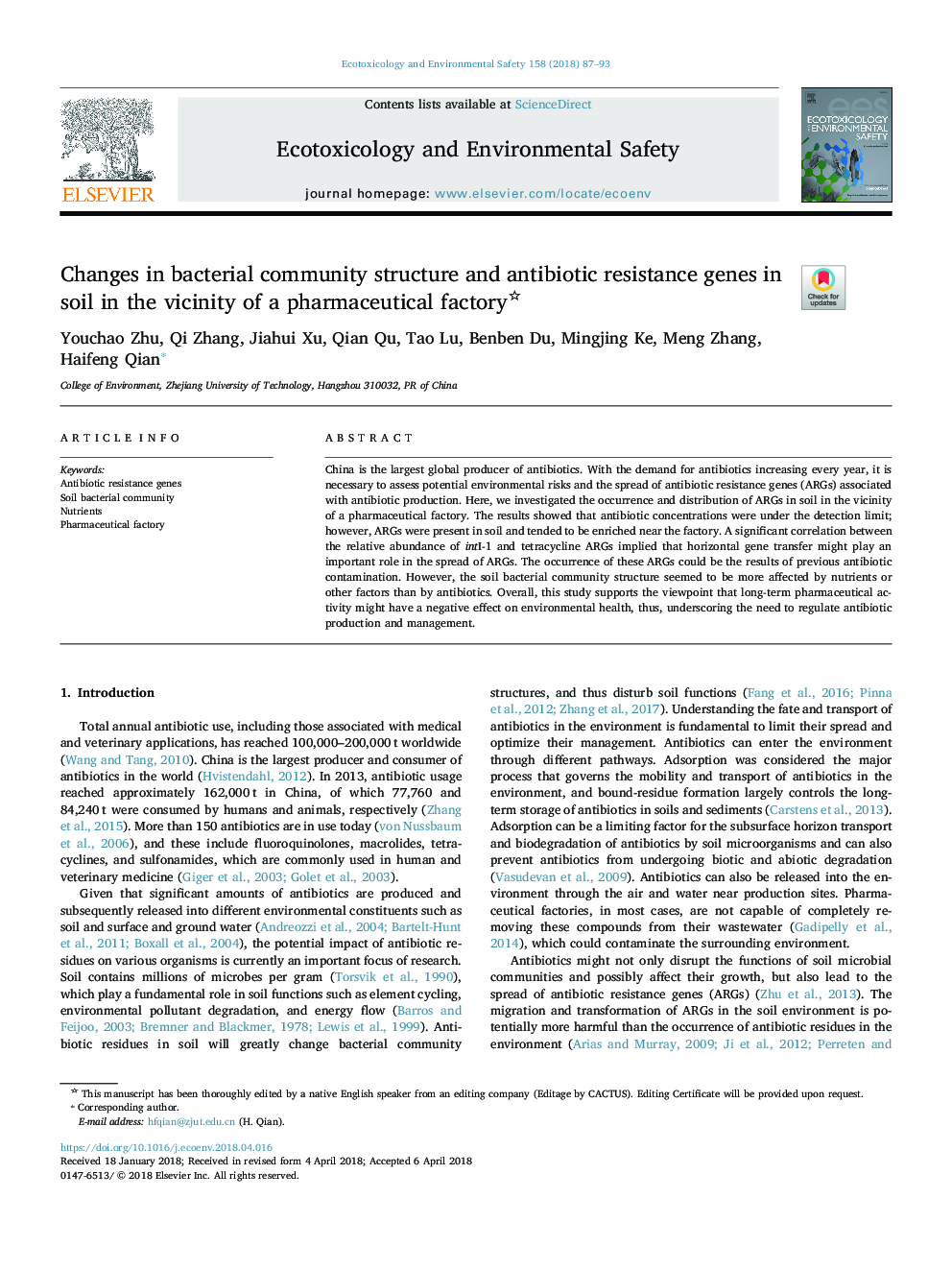| Article ID | Journal | Published Year | Pages | File Type |
|---|---|---|---|---|
| 8853770 | Ecotoxicology and Environmental Safety | 2018 | 7 Pages |
Abstract
China is the largest global producer of antibiotics. With the demand for antibiotics increasing every year, it is necessary to assess potential environmental risks and the spread of antibiotic resistance genes (ARGs) associated with antibiotic production. Here, we investigated the occurrence and distribution of ARGs in soil in the vicinity of a pharmaceutical factory. The results showed that antibiotic concentrations were under the detection limit; however, ARGs were present in soil and tended to be enriched near the factory. A significant correlation between the relative abundance of intI-1 and tetracycline ARGs implied that horizontal gene transfer might play an important role in the spread of ARGs. The occurrence of these ARGs could be the results of previous antibiotic contamination. However, the soil bacterial community structure seemed to be more affected by nutrients or other factors than by antibiotics. Overall, this study supports the viewpoint that long-term pharmaceutical activity might have a negative effect on environmental health, thus, underscoring the need to regulate antibiotic production and management.
Related Topics
Life Sciences
Environmental Science
Environmental Chemistry
Authors
Youchao Zhu, Qi Zhang, Jiahui Xu, Qian Qu, Tao Lu, Benben Du, Mingjing Ke, Meng Zhang, Haifeng Qian,
